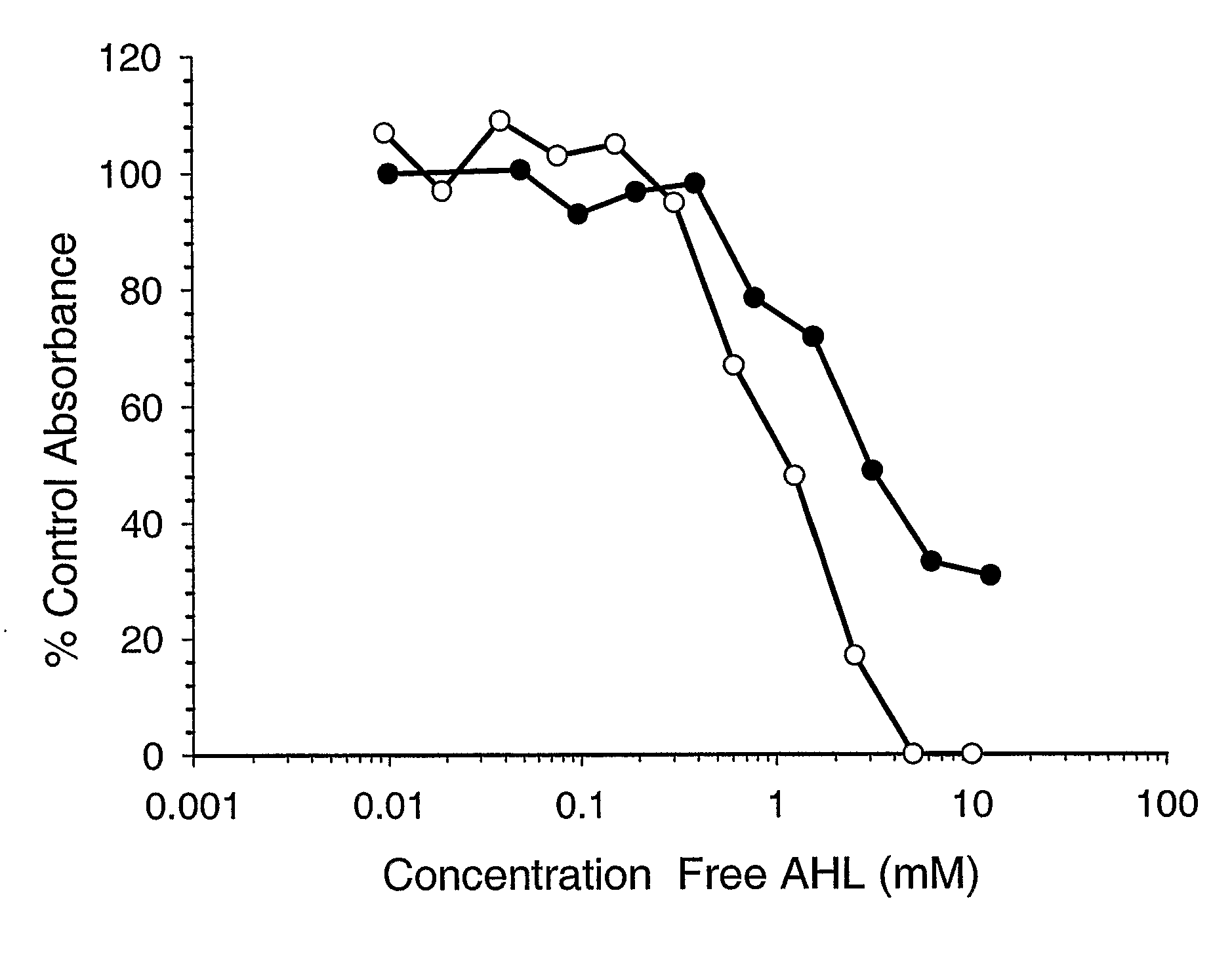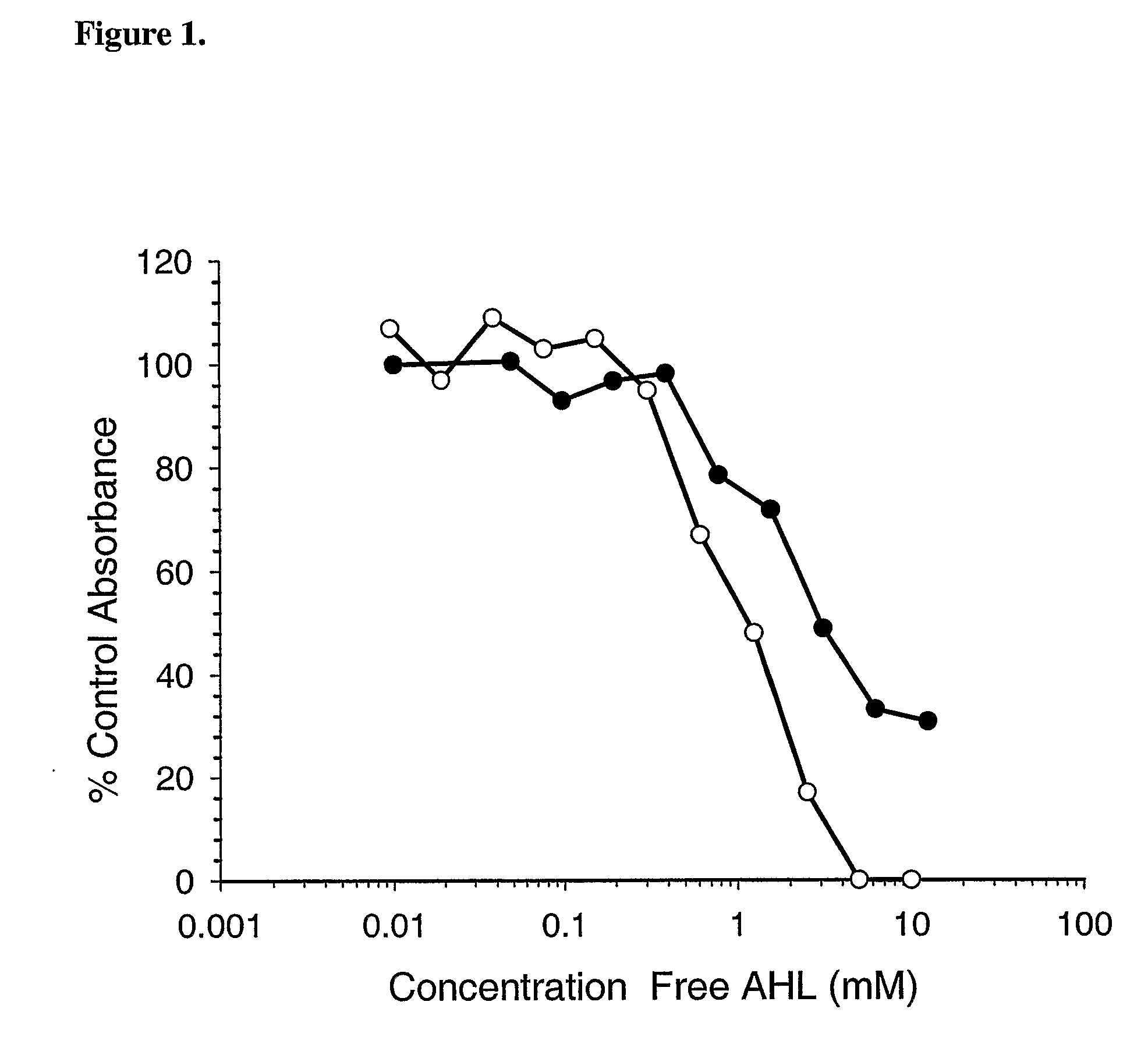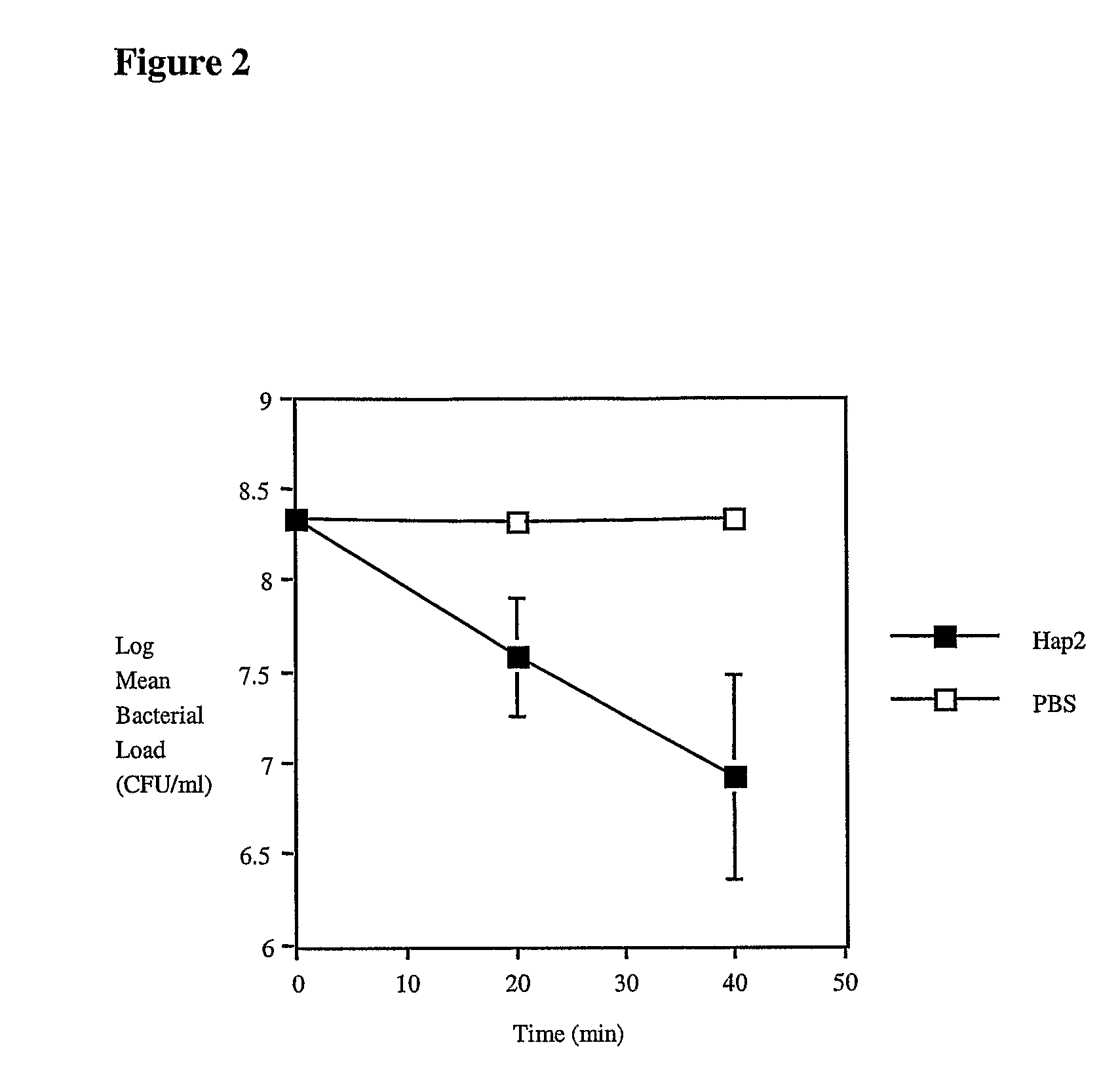Methods For Inducing Autolysis In Infectious Bacteria
a technology of infectious bacteria and autolysis, which is applied in the field of controlling and treating bacterial infections, can solve the problems of ahl to pqs signal molecules being produced, and stimulate rapid cell death, and achieve the effects of reducing the number of pathogenic bacteria pseudomonas aeruginosa, rapid cell death (or autolysis) of ps, and induced collapse of bacterial cell numbers
- Summary
- Abstract
- Description
- Claims
- Application Information
AI Technical Summary
Benefits of technology
Problems solved by technology
Method used
Image
Examples
example 2
Pseudomonas aeruginosa Viability Assay
[0095]Ps. aeruginosa clinical isolate PA01 was passaged in female BALB / c mice (Charles River, approximately 30 days old) by intra-peritoneally injecting 50 microlitres of overnight PAO1 broth culture containing approximately 5×108 CFU as determined by serial plate dilutions. After 24 hours a blood sample was collected from the retro-orbital plexus and the PA01 isolate was recovered from the blood culture. Isolates were confirmed as being P. aeruginosa by Gram staining, colony morphology and pyocyanin production. Aliquots of bacteria were stored at −70° C. and when required, were thawed rapidly, harvested by centrifugation and resuspended in 50 microlitres of sterile phosphate-buffered saline (PBS) or sterile PBS containing Hap2 antibody at a concentration of 37.5 μM. Aliquots of bacteria were placed on ice and serial dilutions in PBS were plated out on blood agar base plates at various time-points (0, 20, 40 minutes). Plates were incubated over...
example 3
Pseudomonas aeruginosa Pulmonary Infection Model
[0097]Ps. aeruginosa clinical isolate PA01 was passaged in female BALB / c mice (Charles River, approximately 4 weeks old) by intraperitoneally injecting 50 microlitres of overnight PA01 broth culture containing approximately 5×108 CFU as determined by serial plate dilutions. After 24 hours a blood sample was collected from the retro-orbital plexus and the PA01 isolate was recovered from the blood culture. Isolates were confirmed as being P. aeruginosa by Gram staining, colony morphology and pyocyanin production. Aliquots of bacteria were stored at −70° C. and when required, were thawed rapidly, harvested by centrifugation and resuspended in sterile phosphate-buffered saline (PBS). Serial dilutions of bacteria in PBS were plated out on blood agar base plates for viable cell enumeration. Plates were incubated overnight at 37° C. and colonies were counted to determine viable bacterial numbers.
[0098] For the first pulmonary infection expe...
example 4
Effect of Antibody on Bacterial Load
[0102] Five treatment groups of 6 mice were infected as described above, and given identical regimes of PBS, PBS plus antibodies or gentamycin. Two time-points (12 h and 24 h) were selected for analysis of bacteriology in blood (FIG. 6), bronchoalveolar lavage (BAL) fluid (FIG. 7), and lung tissue (FIG. 8). Data from blood analysis were combined with that from the survival experiment (Example 2) in order to increase statistical validity. In this case viability of P. aeruginosa in the bloodstream was significantly reduced by treatment with Hap 2, Hap 5, or gentamycin.
[0103] Bacterial loads in BAL fluid and blood were determined by viable cell enumeration using serial dilutions on BAB plates as before. Viability of P. aeruginosa in the lung airways (BAL fluid) 12 h postinfection is significantly reduced by treatment of mice with Hap 2, Hap 5, or gentamycin.
[0104] Bacterial loads in lung tissue were determined by removing, weighing and homogenizin...
PUM
| Property | Measurement | Unit |
|---|---|---|
| Cell death | aaaaa | aaaaa |
| Concentration | aaaaa | aaaaa |
| Ratio | aaaaa | aaaaa |
Abstract
Description
Claims
Application Information
 Login to View More
Login to View More - R&D
- Intellectual Property
- Life Sciences
- Materials
- Tech Scout
- Unparalleled Data Quality
- Higher Quality Content
- 60% Fewer Hallucinations
Browse by: Latest US Patents, China's latest patents, Technical Efficacy Thesaurus, Application Domain, Technology Topic, Popular Technical Reports.
© 2025 PatSnap. All rights reserved.Legal|Privacy policy|Modern Slavery Act Transparency Statement|Sitemap|About US| Contact US: help@patsnap.com



